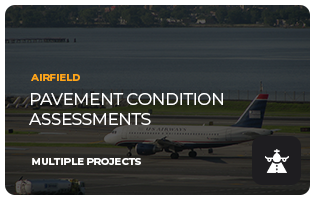Automated condition assessment of
Maryland Overpass
Maryland Transport Authority | Maryland, US
The overpass AAY056011 carrying I-895NB over Belle Grove Road is owned by Maryland Transport Authority (MDTA). It’s an important infrastructure in the Baltimore Area.
Project Overview
Maryland Transportation Authority collaborated with Niricson and conducted a concrete defect survey of the Overpass. Niricson was contracted by Stantec for this project. The project’s scope was specifically limited to the northbound overpass bridge. The bridge’s piers and abutments are of concrete whereas the underdeck was made of steel I-beams.
The team collected the data from the bridge over 2 days- November 7th- 8th, 2023, capturing high-resolution imagery of the piers, spans, and abutments of the bridge and collecting acoustic soundings with the NCX device.


The Solution
Niricson, in collaboration with Stantec and MDTA, utilized Bridge Health to conduct an inspection using automated technologies including drones, AI and machine learning. By employing DRONIC™ (patented multi-layered data collection and fusion architecture, along with a proprietary drone-equipped concrete sounding hammer) and AUTOSPEX™ (patent pending AI-backed platform for defect detection, quantification, and tracking for digital infrastructure condition survey) technologies, they were able to perform a detailed and efficient assessment reducing the risk of missing critical defects and minimising disruption to residents and travellers.
The team mapped defects like cracking, spalling and delamination on the bridge’s key components, providing efficient and detailed coverage. Niricson’s UAV-sounding mechanism enhanced drafting efficiency, reduced documentation time, and eliminated condition uncertainties, mitigating asset risk.
Niricson’s technology, encompassing advanced UAV equipment and proprietary software, has attempted to provide a preliminary defect survey for the MDTA’s overpass and potentially opened the door to transformative asset management practices. The data generated from this effort can be used in the following ways:
- Design Maintenance Plans: Utilize quantitative data to craft meticulous, data-driven maintenance plans crucial for safeguarding critical infrastructure assets.
- Implement Preventive/Predictive Maintenance: Employ technology to monitor asset condition over time, enabling proactive maintenance strategies, reducing reactive repairs, and minimizing service disruptions.
- Optimize Rehabilitation/Maintenance Budgets: Identify rapidly deteriorating assets to allocate rehabilitation and maintenance budgets effectively, prioritizing spending where it’s most needed to mitigate risks.
MDTA-Stantec may consider implementing this digital baseline technology for all new-build, pre-rehabilitation, and post-rehabilitation projects. This initiative can facilitate the Maryland Transportation Authority in digitizing its network and tracking asset conditions over time.







